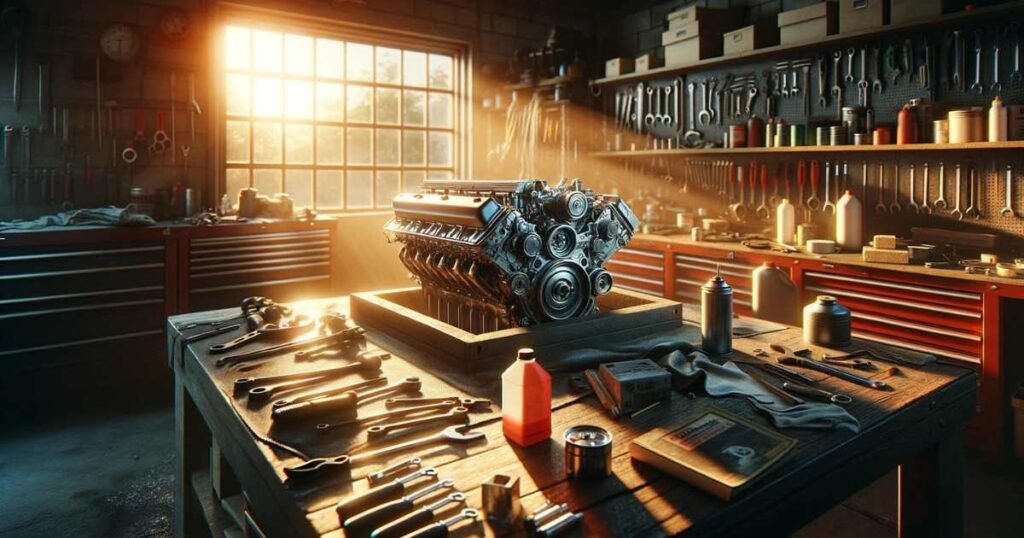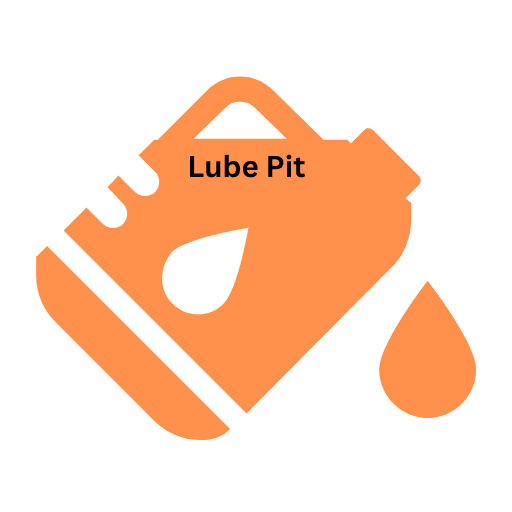This is the million-dollar question, isn’t it? You wouldn’t throw a random number of burgers on the grill, expecting the perfect cookout, would you? The same holds true for your car’s engine. Too much or too little oil can lead to some serious, and expensive, problems. The right amount ensures everything runs smoothly and stays properly lubricated. It’s like the Goldilocks principle, you need the oil amount that’s just right.
So let’s dive deep into finding the sweet spot for your engine.
Table of Contents
Is it Just “One Size Fits All” When It Comes to Oil Quantity?
Absolutely not! Saying all cars need the same amount of oil is like saying everyone wears the same size shoes. Each vehicle, and even different engine variations within the same model, has a specific oil capacity.
It’s determined by the engine’s design, including the size of the crankcase, the oil galleries, and the oil filter. A tiny economy car will need significantly less oil than a big pickup truck or a high-performance sports car. This isn’t a matter of guesswork; it’s an engineering calculation.
Should you always follow the manual even if you have a gut feeling?
Yes, a thousand times yes. Your car’s owner’s manual is the gospel truth when it comes to oil capacity. While your gut feeling might be telling you, “Oh, it’s just a little extra, no big deal,” it’s best to ignore it.
Those numbers are based on extensive testing and engineering. Trust me, your engine will thank you if you resist the urge to play guessing games with oil levels.

Where Can I Find the Specific Oil Capacity for My Vehicle?
Locating the correct oil capacity isn’t some hidden treasure hunt; it’s readily available if you know where to look. There are several reliable sources, each with their own advantages. I always suggest checking a couple of places to confirm the correct quantity.
Is your Owner’s Manual the only place for finding this magic number?
Your owner’s manual is the most reliable first stop in your quest for oil capacity. It’s literally the book of truth for your specific vehicle, containing all the manufacturer’s specifications.
Look for the section that covers “Engine Specifications,” or “Fluids and Lubricants,” or something similar. It’ll usually list the oil capacity in quarts or liters, sometimes even with and without a filter change.
Should you Trust the Internet for these numbers?
The internet can be a useful tool, but you need to be careful. There are countless websites and forums providing vehicle specifications, and some are more reliable than others. Stick to reputable automotive sites, like the ones for well-known parts suppliers or vehicle information databases.
Always cross-reference the information with another source if you use the internet, or go back to that ever-trusty manual.
Do the Auto Parts Stores have this information handy?
Many auto parts stores have computer systems that can provide vehicle-specific information, including oil capacity. They often use VIN (Vehicle Identification Number) lookup tools, which will give accurate data specific to the car.
If you’re already picking up oil and filter, it’s a good idea to ask them. They’re usually happy to help, especially if you are buying the parts from them!
What Happens If I Don’t Use the Correct Amount of Oil?
We’ve established the importance of getting the oil quantity right, so what are the consequences of not doing so? It’s like cooking: adding too little salt will leave it bland and adding too much will make it inedible. It’s not as drastic for car oil but it’s something that should be taken very seriously.
Is “A Little Too Much” Really That Bad for My Car’s Engine?
Yes, overfilling with oil is problematic. When you add too much oil, it can make its way into parts of the engine where it’s not intended to be. One of the worst consequences is what is known as aeration or oil foaming.
Your crankshaft, as it spins, hits the excess oil and froths it up with air. This aerated oil doesn’t lubricate properly, leading to increased engine wear.
A much worse consequence can be damage to seals, leading to oil leaks. The extra pressure from the excess oil can cause your seals to burst and leak oil onto other engine parts.
Could overfilling cause any leakages that you need to worry about?
Absolutely. Overfilling can put excessive pressure on the engine’s seals and gaskets, leading to oil leaks. These leaks can cause damage to other engine components and are a headache to repair.
More often than not these are tricky to find and get to. Furthermore, the leaked oil can cause oil burning smells that can seep into the car’s cabin.
What are the major types of oil change?
There are different types of oil you can use, and picking the right one is important. Here’s a simple guide:
- Conventional Oil: This is the basic oil made from petroleum. It’s the cheapest, but it doesn’t last as long and isn’t the best for very hot or cold weather.
- Synthetic Blend Oil: This is a mix of conventional and synthetic oils. It’s better than just conventional oil, especially in tougher conditions, and it’s not too expensive.
- High-Mileage Synthetic Blend Oil: If your car has driven more than 75,000 miles, this oil is a great choice. It has special stuff in it to help older engines stay healthy.
- Full Synthetic Oil: This is the top-of-the-line oil. It’s made from very clean petroleum and special additives. It works the best, especially in extreme temperatures, and it lasts the longest, but it’s also the most expensive.
Always remember to check your car’s manual to see what kind of oil and how thick it should be for your specific engine.
What Kind of Oil Should I Use After I Know How Much?
The type of oil you choose matters just as much as the quantity. Your car’s manufacturer recommends a specific grade, often indicated by codes like 5W-30 or 10W-40.
This number is designed based on the operating temperature of your engine. It’s not just about viscosity; the oil also has specific additives to protect the engine.
Do I need to use only the grade written in the manual or should it be changed on the basis of weather?
Generally, the manufacturer’s recommended oil grade should be used. However, in extremely cold or hot climates, it might be beneficial to consult your manual for alternative recommendations.
If you’re in a very cold area, a lower viscosity oil (e.g., 0W-20) may be better for cold starts, and in extremely hot climates, a slightly higher viscosity (e.g., 10W-40) might offer better protection at elevated temperatures. Always stick with what the manufacturer recommends if you’re unsure!
Should you switch to synthetic from conventional oil?
Switching from conventional to synthetic oil can have benefits. Synthetic oils offer better protection against wear and high temperatures and often last longer before needing to be changed.
The benefit is also dependent on the type of vehicle you own, with performance cars or vehicles that do high mileage, it is a good idea to switch to synthetic. However, if your car only specifies conventional oil, using synthetic isn’t really needed and you’d be better off saving your money!
What Type of Oil Does My Car Need?
When it comes to taking care of your car, one of the most important things to think about is the type of oil it needs. The oil in your car is like a special juice that keeps the engine running smoothly. But not all cars need the same kind of oil. There are different kinds, and each one is made for different types of engines and weather.
There are two big things to remember when you’re choosing oil for your car:
- Viscosity: This is a fancy word that means how thick the oil is and how well it can move around in different temperatures. The right thickness for your car’s oil is usually written in the manual that comes with your car. It looks like a code with two numbers, like “5W-30.” The first number tells you how the oil acts when it’s cold outside, and the second number tells you what it’s like when it’s hot.
- Conventional vs. Synthetic Oil: There are two main types of oil. Conventional oil is the basic kind. Synthetic oil is a special kind that works really well, especially when it’s very hot or very cold outside. Your car’s manual will tell you which type is best for your car.
When Should I Change My Car’s Oil?
Figuring out when to change the oil in your car is really important for keeping your car running well. The best place to find out when to change your oil is in your car’s owner’s manual. Usually, it’s recommended to change the oil every 3,000 to 5,000 miles, but it can be different for each car. How you drive and the kind of oil you use can also make a difference.
Nowadays, some new cars have special lights that tell you when it’s time to change the oil. Even if your car has this feature, it’s still a good idea to look in the manual to know for sure what’s best for your car.
Here are some extra tips to make sure your car’s oil stays in good shape:
- Check Your Oil Level Regularly: You should try to check the oil level in your car about once a month. There’s a tool in your car called a dipstick that helps you do this. Checking the oil helps you know if you have enough and if there are any leaks.
- Don’t Just Add More Oil: If you find out that your car doesn’t have enough oil, it’s better to get a complete oil change rather than just adding more oil. This way, your engine gets all fresh, clean oil.
- Use Good Oil and Filters: Using high-quality oil and filters that your car manufacturer recommends can help your engine stay healthy for a longer time.
Remember, taking good care of your car’s oil means your car can take good care of you by running smoothly and lasting longer!
3 Easy Ways to Find Your Engine’s Oil Capacity
If you want to know how much oil your car’s engine needs, there are three simple ways to find out:
- Check the Owner’s Manual: Your car’s manual is like a treasure map for your car. It has lots of useful information, including the type and amount of oil your car needs. Look in the section about fluids, and you’ll find what you’re looking for.
- Call a Parts Professional: Another great way to find out is by talking to someone who knows a lot about car parts. You can call the parts department at a car dealership. Tell them about your car – like what year it is, what model, and what kind of engine it has. If you’re not sure, you can give them your car’s VIN (that’s like its special identification number), and they can help you.
- Use Online Tools: There are websites, like Pennzoil Oil Selector, that can tell you about your car’s oil needs. You just enter your car’s details, like its make and model, and they’ll tell you the right type of oil, how thick it should be, and how much you need.

Checking Your Oil Level and Avoiding Common Mistakes
After you know how much oil your car needs, it’s important to regularly check the oil level. Here’s how to do it:
- Park your car on level ground and turn off the engine.
- Wait for a few minutes to allow the oil to settle.
- Make sure your car’s engine is cool and parked on a flat surface.
- Find the dipstick, pull it out, and wipe it clean with a cloth that doesn’t leave lint.
- Put the dipstick all the way back in, then take it out again to see the oil level. The oil should be up to the “full” mark.
- If the oil level is low, add oil in small increments, checking the level after each addition until you reach the recommended level.
- If you need more oil, add a little bit at a time. Check the level again after each time you add some. This helps you not put in too much oil.
Always remember, putting in too much oil isn’t good for your car. It’s just as important not to overfill it as it is not to let it get too low. Keeping the oil level just right helps your car’s engine stay healthy and work its best.
Can I Change My Oil Myself or Should I Visit a Mechanic?
This is a very personal question. While doing your own oil change can save money, it requires knowledge and the correct equipment. It depends on your comfort and skill level when it comes to DIY.
What Tools and Equipment Do I Need For a DIY Oil Change at Home?
Changing your own oil can be a rewarding and cost-effective task but you need the right tools. Here’s what you’ll need:
- Wrench: To remove the oil drain plug
- Oil Filter Wrench: To remove the old filter
- Oil Drain Pan: To collect the old oil
- New Oil Filter: Correct one for your vehicle
- New Engine Oil: Correct type and quantity
- Funnels: To add the new oil
- Jack and Jack Stands: To safely elevate the car
- Gloves and Rags: To keep your hands clean
Can I do it with household equipment or do I need to buy more tools?
While you might have some household tools that could potentially work, it’s crucial to have the right automotive-specific tools for an oil change. Trying to use a regular wrench on the oil drain plug could lead to stripping the head which could cause an expensive repair. Investing in the correct equipment will not only make the task easier but also much safer.
When Should I Leave it to the Professionals?
There are some scenarios where taking your car to a mechanic is not a matter of being lazy, it’s the best move for your car and safety. If you’re new to car maintenance or lack the confidence to get the job done yourself then going to a professional is a smart move.
When does “DIY” turn into “Don’t You Do It?”
If you’re not confident with a specific task, then it’s best to go to professionals. For instance, if you’ve never jacked up a car, you shouldn’t start with this job. It’s also a good idea to stay away from DIY if your car is too low to fit a jack or has some safety concerns.
Are there scenarios where you should just take your car to a mechanic?
If you’re unsure about the type of oil, the oil filter, or any other aspect of the process, it’s better to visit a mechanic for your oil change. There are no points for trying to do it yourself and messing it up badly. If there are any leaks or issues that are observed during the process then it’s also a better idea to take it to the professional.
Can I Recycle My Used Oil and Old Filter?
Absolutely! Recycling your used oil and filters is not only environmentally responsible but also keeps your old oil out of the landfills.
What is the correct way to dispose of used oil and filters?
Do not dump it on the ground, down the drain, or in the trash. Most auto parts stores and recycling centers will accept used oil and filters. You can pour the oil back into the empty bottles it came from, and take the oil filter in a plastic bag. Check your local area for regulations on where to take your used oil and filters.
Final Thought
So, there you have it. This covers most of the things you need to know before tackling an oil change. Remember, proper oil quantity and quality are essential for a long-lasting engine. While DIY can be empowering, it’s always better to seek help from a professional if you’re unsure. Always keep the user manual in mind and double-check with other sources.
FAQs
What happens if my oil level is too low?
Running low on oil can lead to increased engine wear, overheating, and even engine damage.
What happens if my oil level is too high?
Excess oil can cause foaming, reduced lubrication, and potential damage to engine seals.
Can I use any oil filter with my car?
No, always use an oil filter specifically designed for your car make and model. Consult your owner’s manual or consult a mechanic for the correct filter.
Is 1 quart enough for an oil change?
One quart is only 0.946 liters, so it’s unlikely to be enough for most oil changes. Most cars hold several quarts, and even smaller engines typically need 4-5 quarts (around 3.78-4.73 liters). Double-check your owner’s manual to confirm the required amount for your car.
How many Liters of oil do I need after an oil change?
Unfortunately, there’s no single answer as it depends on several factors:
- Engine size: Larger engines require more oil. Typically, a 4-cylinder engine needs 4-5 liters, while V6s might need 5-6, and V8s can go up to 8 liters or more.
- Vehicle model and year: The exact oil capacity for your specific engine is listed in your car’s owner’s manual. This is the most accurate source of information, so always refer to it first.
- Oil type: Synthetic oils might have slightly different capacities compared to conventional oils. Check your manual for specific recommendations.
Additional factors to consider:
- Filter change: Add 0.5-1 additional liter if changing the oil filter, as some oil gets trapped inside.
- Performance oil: High-performance engines might require specific oil quantities. Consult your manual or a mechanic.
- Previous oil changes: Check the dipstick before adding new oil to avoid overfilling or underfilling.
Is $60 too much for an oil change?
It depends on several factors:
- Location: Prices can vary depending on your region and the cost of living.
- Type of oil used: Synthetic oil is generally more expensive than conventional oil.
- Shop type: Dealerships might charge more than independent shops.
- Additional services: If you get other services like filter change or tire rotation, the cost will increase.
Therefore, $60 could be reasonable in some areas for a basic oil change with conventional oil, while it might be considered high in others or for specific service packages.
How much oil is used between oil changes?
The amount of oil used between oil changes varies depending on:
- Driving habits: Frequent stop-and-go traffic or towing can consume more oil.
- Engine condition: Worn-out engines might burn more oil.
- Oil type: Synthetic oils generally burn less oil than conventional ones.
It’s impossible to give a precise number as it depends on individual circumstances. However, most manufacturers recommend oil changes every 5,000-10,000 miles (8,000-16,000 km) or once a year, whichever comes first. Regularly checking your oil level with the dipstick is crucial to avoid running low.

